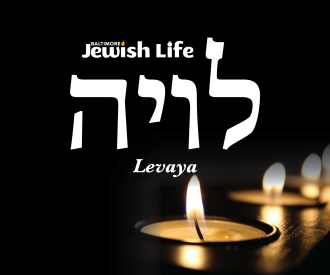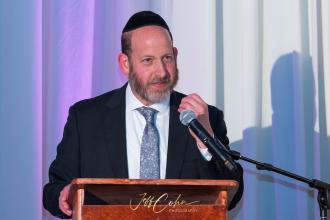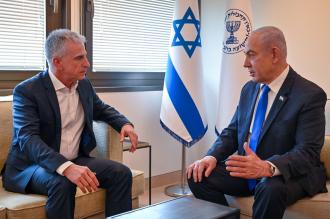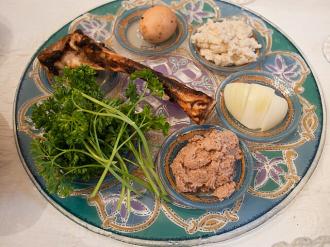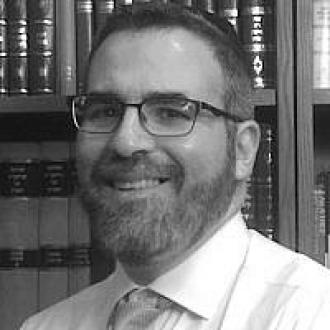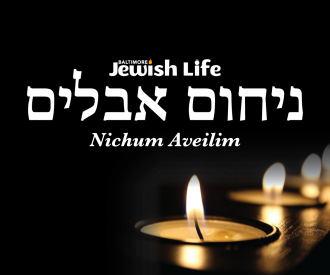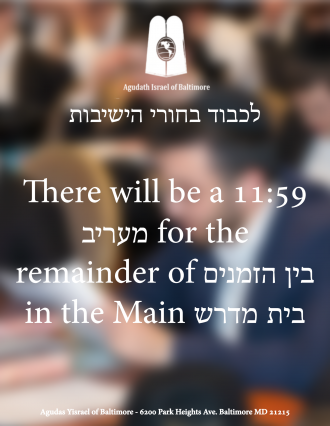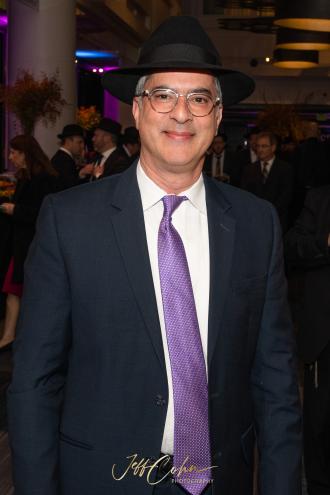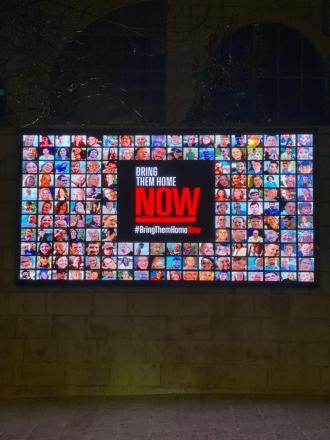In honor of the memory of Chayah Masya Bas Asher HaKohen who inspired the message within this Dvar Torah.
One of the more unusual aspects of the night of the exodus from Egypt was the need to place the blood of the Paschal lamb upon the door posts and lintel of the entrances to their homes. This would ward off the impending Plague of the Firstborns. There are several Tannaitic sources that concur that the blood of their recent circumcisions was also added to it as well. The Zohar more fascinatingly teaches that this blood didn’t merely stripe the lintel with its crimson brightness but they actually wrote out the entire Ineffable Name of G-d, י-ה-ו-ה, upon the lintel, in blood!
The remarkable Gaon, the Rav of Brisk and subsequently of Jerusalem, HaRav Yehoshua Leib Diskin, posed a startling question regarding this detail. What did they do with Name of G-d after they left? Did they leave it exposed to the filthy Egyptians who would eventually occupy these homes? The Jews were certainly prohibited from erasing the Tetragrammaton, so what recourse did they have. In his inimitable brilliant fashion he suggests the following ingenious solution.
He first quotes from earlier sources that differ whether the Name was painted on the interior side of the lintel that faced the living space of the home, or perhaps it was recorded on the exterior face of the lintel, exposed to the public. He then posits reconciliation between the two opinions by claiming that the Name was written on the inner side, though in its mirror image, starting with the yud being reversed beginning from the left, followed by the subsequent letters being written in their mirror opposite direction as well. The lintel on the night of the plague, he further asserts, miraculously became transparent, so that the initial ‘mirrored’ image would now appear to all those viewing ‘through’ the lintel from the outside, as clearly spelling out, in its now proper order, the full glory of His Ineffable Name!
The innovation of this idea solves the dilemma in erasing the Name. Since it was never ‘written’ properly, it never attained the status of a Name that would be enhanced with sanctity! The question of erasure or simply leaving it is now totally moot.
Perhaps there is a deeper and practical lesson for all of us within this unusual detail as well.
On the night of Pesach, G-d, Himself, took us by His hand. He was simply present. The night that would forge us as a nation would have within it, no doubt, the seed that all else emanates from. Our relationship with G-d is never about simply doing His will, but more about becoming it. The notion that we are a חלק אלו-ה ממעל, a part of G-d above, requires of us to fuse as much as is humanly possible, His will to ours.
When we viewed the mirrored Name upon our wall, we realized that the goal is not as much for us to always be dutiful to Him, but to actually become a vessel for the Divine Presence so that when we are perceived by others, the Name of G-d is readily evident.
There is another place where the mirror image of His Name makes contact with the human flesh, yet it appears to all who view that individual to see it in its proper order. The Kohen Gadol, the High Priest wears as one of his eight vestments the ציץ, the gold Head-plate. There the words, קדש לי-ה-ו-ה, Holy to Hashem, was etched into the back of the gold plate, the side that would touch his skin when adorned, the words Holy to Hashem, in their mirrored image, but would protrude on its front side, that was exposed for all to see, in its natural readable order.
The Kohen Gadol epitomized in this way this idea of the ultimate ‘representative’ of G-d’s will on earth.
We are told that there were a significant number of Jews who despite having experienced all the miracles that transpired up until that night of the exodus were still reluctant to undergo Bris Milah, circumcision. Despite being told unequivocally that the blood of the sacrifice was necessary to protect them from the plague, and that without being circumcised one didn’t qualify to bring a Pesach, they still wouldn’t submit to circumcision. They were basically risking their lives. We are told that G-d brought a scent from the Garden of Eden that emanated from Moshe’s very own sacrifice that enticed them greatly. When they begged him to partake from this exquisite delicacy, he informed them that unless they first underwent Milah the tasting was taboo. The Midrash goes on to describe how they all performed Milah, and how Moshe then mixed their blood with the blood of the Pesach. G-d descended and proceeded to kiss and bless each one of them. Of that moment it is stated by the Prophet Yechezkel that G-d declared, בדמיך חיי, Through your blood shall you live! (שמ"ר י"ט ה)
It seems unfair that after having to be seduced to circumcise themselves through baiting them with some unimaginable and uncontrollable urge for pleasure, they deserve to be kissed and embraced by G-d and placed on a pedestal for all of time as the ones who exemplify a ‘blood’ commitment to G-d and epitomize an inspired life of devotion to G-d?
The Midrash never gets back to their having actually eaten from the exquisite fare.
Perhaps there was no deception going on but a deeper theological debate. The reluctant Jews feared a Judaism that begins with a premise of pain. Milah symbolizes a willingness to sacrifice, to give a literal piece of one’s flesh, with all the worry, pain and danger associated with it. How, they wondered, can a meaningful religion be predicated on pain?
G-d infused a sample of the joy that awaits a Jew, a pleasure rooted in the relationship we are privileged to have with G-d which is symbolized in the form of a scent of Gan Eden, allowing it to be observed in the persona of Moshe and his personal ecstasy in his performance of the Mitzvah of Pesach. They are immediately drawn and desperately want to be a part of it. Moshe teaches them perhaps the most basic premise one needs to accept if they are to access this ‘scent’. He tells them, if you don’t understand that the key to closeness with G-d lays in seeing that connection precisely in moments of difficulty, in knowing He suffers along, prods one along in order to deepen the bond, then you will never be able to access true joy. The joy is in the relationship and when one gets that, one can begin to feel that exquisite warmth, pleasure and love in al its manifestations. The relationship can only be honed through challenge.
They get it. It wasn’t necessary to eat as that was never Moshe’s intention, it was a merely lure to bring them to a true perception of reality.
It is the two bloods by which we live, the blood of challenge and pain that is mixed equally, with blood of joyous celebration. They can only be achieved in consonance. That is the message that was painted across Egypt.
The Saintly Trisker Maggid reveals that the word המשקוף, lintel, upon which the name of G-d was written, breaks down into two words, מש"ה קו"ף. קו"ף represents the letter ק which we are taught stands for G-d. קו"ף is numerically equivalent to 186 the same value as מקום, the term we use to describe G-d as the Omnipresent. Moshe who succeeded in paring away any notion of self, became the ultimate embodiment of His will and is thus associated in this display of our allegiance to this remarkable relationship with G-d. He adds the mystical notion of squaring each letter of the Ineffable Name, which brings one to 186, the very essence of the Omnipresent.
May I humbly add that the word שקוף embedded in the word המשקוף, means transparent.
Putting this all together the message is one in the same. When we are ready to be the projector for the Name of G-d, it will be visible to all who come in our contact. The criteria to achieve that stature lay in our ability to mix the bloods of Milah and Pesach; pain and joy. When we master that our lives will be filled with the enthusiasm and joy that emanates naturally in that special relationship with G-d, affecting all who are fortunate to be in that space.
באהבה,
צבי יהודה טייכמאן

